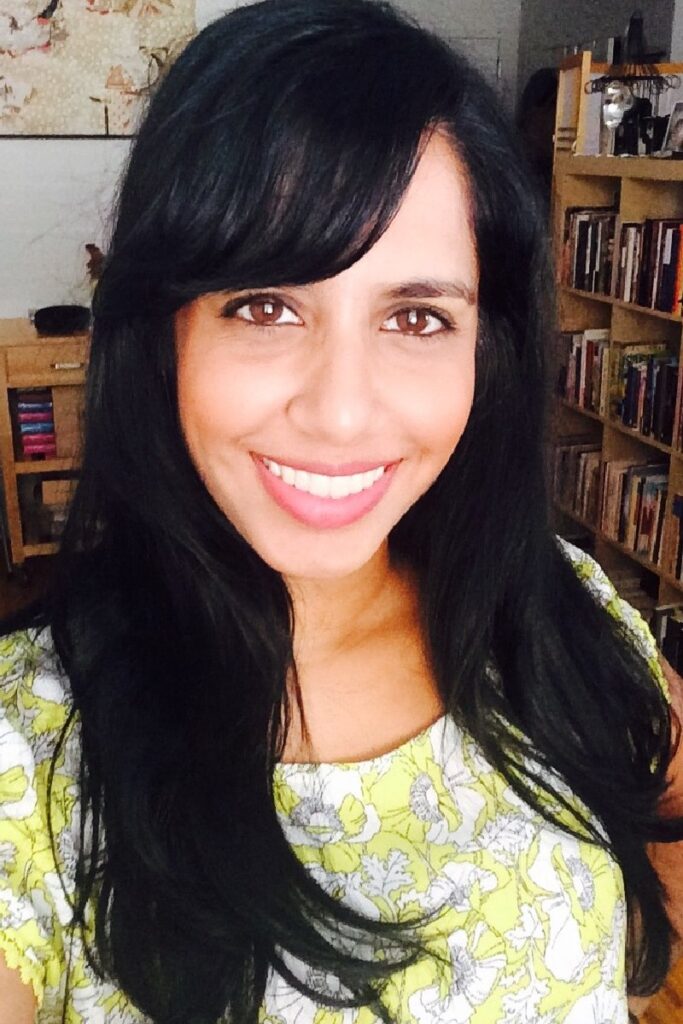By Tonia-lee Haughton
Dr. Shereen Inayatulla is an Associate English professor at York College who is known by students to be heartwarming. Her educational background consists of a bachelor’s in English Literature from the University of Manitoba before she earned her master’s at the University of Windsor where she majored in English Language, Literature, and Creative Writing. Later on she earned a PhD in English Composition and Rhetoric at the University of Wisconsin-Milwaukee. Today she specializes in composition and rhetoric as well as literacy studies, autoethnography, postcolonial, feminist and queer theory. As an educator and a writer she utilized all her areas of expertise in sections of journal articles, book chapters and essays. One focus in particular, queer theory, is applied to one of her recent writing projects.
Last August she published the sixteenth chapter titled, “Subatomic Literacies and Queer Quantum Storytelling,” of a book called The Routledge Handbook of Queer Rhetoric. This written contribution to the book is pulled from her life experiences as a South Asian around storytelling, her interests in autoethnography and fiction writing, and her limited knowledge on quantum physics to apply to her explanation of queer theory. As I interviewed her to learn more about her thought process behind this chapter, she was adamant that she knows very little about physics and that she doesn’t claim to be an expert on scientific concepts. However, as I was curious and confused about the relationship between quantum physics and queer theory, she explained, “I started thinking about how a lot of people before me have written about, or even explored the idea of queer temporality; this idea that queer experiences with time for various queer people might not look like these traditional timelines, and if that’s the case then what do we make of that? Because there’s so much pressure to do something a certain kind of way. And so, I feel like there’s a strong connection between the way time is conceived within this body of scholarship we call queer theory and the way I’m thinking of time in terms of storytelling — South Asian immigrants and our practices with storytelling. There’s a connection between those two things, and the observations made in quantum physics about time as a non-linear entity.” Inayatulla intended to connect her knowledge on queer theory to her interest in quantum physics by showing that queer experiences not following the fixed format of life’s timelines is similar to the studies done in quantum physics showing that time is non-linear and inconsistent.

The discussion of time in quantum physics also intersects with her cultural background as a South Asian and how oral storytelling was done in her family. This played a huge role in her inspiration to write this chapter of the book, using fictional writing style to make these connections. On the topic of quantum physics, she stated, “I started picking up a lot of books on the subject and immediately made a connection into the ways in which my family tells stories, and the way I was raised in the oral storytelling traditions. I started to really wonder, also, what it had to do with the way South Asian immigrants experienced time when moving from regions of South Asia to the U.S. and Canada, and the ways in which time and progress are coded as linear.” She used these storytelling techniques learned from childhood to correlate queer theory to what she read about quantum physics, based upon her cultural practices of storytelling and her love of fiction writing. Rather than explicitly saying that these things are similar, she wants readers to observe the similarities between them.
With an unexpected but interesting connection between these two concepts, the question comes up as to why people should read this chapter and who would be most benefited from reading it. Inayatulla said that she doesn’t require people to read this chapter. However, she added, “It’s for people who are actually trying to figure out ways to use their autoethnographic experience as a form of inquiry towards a research project, and that’s why I think it might be useful to people who might be interested in that.” Autoethnography is one of her specialties, and her interest in such is what drove her to writing the chapter on this particular topic, along with her addition of autoethnographic material, which is based on another project she is working on. Therefore, people interested in autoethnography would be inspired by her references made toward that subject in order to complete their own projects.

